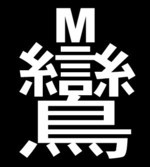|
Eastern Europe

Greece
Hellas Iraklion Ηράκλειο 
Crete is the largest and most populous of the Greek islands, the 88th largest island in the world and the fifth largest island in the Mediterranean Sea, after Sicily, Sardinia, Cyprus and Corsica. 
Crete forms a significant part of the economy and cultural heritage of Greece, while retaining its own local cultural traits (such as its own poetry and music). It was once the centre of the Minoan civilization (c. 2700–1420 BC), which is the earliest known civilization in Europe. 
Heraklion is the largest city and the administrative capital of the island of Crete. It is the fourth largest city in Greece and the third largest urban area in Greece. 

Iraklion Ηράκλειο Crete Κρήτη november 2022

Venetian constructions such as the Koules Fortress (Castello a Mare), the ramparts and the arsenal dominate the port area. 
Heraklion Iraklion Ηράκλειο, Crete Κρήτη, Greece Hellenic Republic, Ελληνική Δημοκρατία Ellinikí Dimokratía, november 2022. 
Heraklion Iraklion Ηράκλειο, Crete Κρήτη, Greece Hellenic Republic, Ελληνική Δημοκρατία Ellinikí Dimokratía, november 2022. 
Heraklion Iraklion Ηράκλειο, Crete Κρήτη, Greece Hellenic Republic, Ελληνική Δημοκρατία Ellinikí Dimokratía, november 2022. 
Heraklion Iraklion Ηράκλειο, Crete Κρήτη, Greece Hellenic Republic, Ελληνική Δημοκρατία Ellinikí Dimokratía, november 2022. 
Heraklion Iraklion Ηράκλειο, Crete Κρήτη, Greece Hellenic Republic, Ελληνική Δημοκρατία Ellinikí Dimokratía, november 2022. 
Heraklion Iraklion Ηράκλειο, Crete Κρήτη, Greece Hellenic Republic, Ελληνική Δημοκρατία Ellinikí Dimokratía, november 2022. 
Heraklion Iraklion Ηράκλειο, Crete Κρήτη, Greece Hellenic Republic, Ελληνική Δημοκρατία Ellinikí Dimokratía, november 2022. 
Heraklion Iraklion Ηράκλειο, Crete Κρήτη, Greece Hellenic Republic, Ελληνική Δημοκρατία Ellinikí Dimokratía, november 2022. 
Heraklion Iraklion Ηράκλειο, Crete Κρήτη, Greece Hellenic Republic, Ελληνική Δημοκρατία Ellinikí Dimokratía, november 2022. 
Around the historic city center of Heraklion there are also a series of defensive walls, bastions and other fortifications which were built earlier in the Middle Ages, but were completely rebuilt by the Republic of Venice. 
Iraklion Ηράκλειο Crete Κρήτη november 2022

The Basilica of St Titus, the Patron Saint of Crete during the medieval times. Iraklion Ηράκλειο, november 2022. 
The Basilica of St Titus (interior), the Patron Saint of Crete during the medieval times. Iraklion Ηράκλειο, november 2022. 
The Venetian loggia (1626–28). Heraklion Iraklion Ηράκλειο, Crete Κρήτη, november 2022. 
The Morosini fountain in Lions Square. Heraklion Iraklion Ηράκλειο, Crete Κρήτη, november 2022. 
The Saint Mark's basilica in Lions Square. Heraklion Iraklion Ηράκλειο, Crete Κρήτη, november 2022. 
The Saint Mark's basilica in Lions Square. Heraklion Iraklion Ηράκλειο, Crete Κρήτη, november 2022. 
Heraklion Iraklion Ηράκλειο, Crete Κρήτη, Greece Hellenic Republic, Ελληνική Δημοκρατία Ellinikí Dimokratía, november 2022. 
Agios Minas Cathedral Ιερός Μητροπολιτικός Ναός Αγίου Μηνᾶ november 2022

The Agios Minas Cathedral (Greek: ῾Ιερός Μητροπολιτικός Ναός ῾Αγίου Μηνᾶ) is a Greek Orthodox Cathedral in Heraklion. 
Ιt is dedicated to Saint Menas the martyr and wonderworker (285-309 A.D.), who is the patron saint of Heraklion. 
It was built from 1862 to 1895. The construction was interrupted during the Cretan Revolution of 1866–1869. 
The church has a cruciform architecture with a central dome. 
The Agios Minas Cathedral (Greek: ῾Ιερός Μητροπολιτικός Ναός ῾Αγίου Μηνᾶ). Heraklion Iraklion Ηράκλειο, Crete Κρήτη, november 2022. 
The Agios Minas Cathedral (Greek: ῾Ιερός Μητροπολιτικός Ναός ῾Αγίου Μηνᾶ). Heraklion Iraklion Ηράκλειο, Crete Κρήτη, november 2022. 
The Agios Minas Cathedral (Greek: ῾Ιερός Μητροπολιτικός Ναός ῾Αγίου Μηνᾶ). Heraklion Iraklion Ηράκλειο, Crete Κρήτη, november 2022. 
Heraklion Iraklion Ηράκλειο, Crete Κρήτη, Greece Hellenic Republic, Ελληνική Δημοκρατία Ellinikí Dimokratía, november 2022. 
Heraklion Iraklion Ηράκλειο, Crete Κρήτη, Greece Hellenic Republic, Ελληνική Δημοκρατία Ellinikí Dimokratía, november 2022. 
Heraklion Iraklion Ηράκλειο, Crete Κρήτη, Greece Hellenic Republic, Ελληνική Δημοκρατία Ellinikí Dimokratía, november 2022. 
Heraklion Iraklion Ηράκλειο, Crete Κρήτη, Greece Hellenic Republic, Ελληνική Δημοκρατία Ellinikí Dimokratía, november 2022. 

Knossos (also Cnossos) is the largest Bronze Age archaeological site on Crete and has been called Europe's oldest city.
Knossos Κνωσός november 2017

Settled as early as the Neolithic period, the name Knossos survives from ancient Greek references
to the major city of Crete. The palace of Knossos eventually became the ceremonial and political centre of the Minoan civilization and culture. The palace was abandoned at some unknown time at the end of the Late Bronze Age, c. 1380–1100 BC. The reason why is unknown, but one of the many disasters that befell the palace is generally put forward.  In the first palace period around 2000 BC the urban area reached a size of up to 18,000 people. In its peak the palace and surrounding city boasted a population of 100,000 people shortly after 1700 BC. Knossos Palace 29.11.2017  In Greek mythology, King Minos dwelt in a palace at Knossos. He had Daedalus construct a labyrinth, a very large maze (by some connected with the double-bladed axe, or labrys) in which to retain his son, the Minotaur. Daedalus also built a dancing floor for Queen Ariadne. The name "Knossos" was subsequently adopted by Arthur Evans. Knossos Palace 29.11.2017  The myth of the Minotaur tells that Theseus, a prince from Athens, whose father is an ancient Greek king named Aegean, reason for the name of the Greek sea (the Aegean Sea), sailed to Crete, where he was forced to fight a terrible creature called the Minotaur. Knossos Palace 29.11.2017  The Minotaur was a half man, half bull, and was kept in the Labyrinth – a building like a maze – by the king Minos, the ruler of Crete.  The king's daughter Ariadne fell in love with Theseus.  Before he entered the Labyrinth to fight the Minotaur, Ariadne gave him a ball of thread which he unwound as he went into the Labyrinth so that he could find his way back by following it.  Theseus killed the Minotaur, and then he and Ariadne fled from Crete, escaping her angry father.  As it turns out, there probably was an association of the word labyrinth, whatever its etymology, with ancient Crete.  Knossos Palace 29.11.2017  Knossos Palace 29.11.2017  Knossos Palace 29.11.2017  Knossos Palace 29.11.2017  Knossos Palace 29.11.2017  Knossos Palace 29.11.2017 
Iraklion Ηράκλειο Crete Κρήτη

Heraklion is close to the ruins of the palace of Knossos, which in Minoan times was the largest centre of population on Crete. 
Knossos had a port at the site of Heraklion (at Poros Katsambas neighborhood) from the beginning of Early Minoan period (3500 to 2100 BC). Between 1600 and 1525 BC, the port was destroyed by a volcanic tsunami from nearby Santorini, leveling the region and covering it with ash. 
After the fall of the Minoans, Heraklion, as well as the rest of Crete in general, fared poorly, with very little development in the area. 
Only with the arrival of the Romans did some construction in the area begin, yet especially early into Byzantine times the area was abound with pirates and bandits. 
The present city of Heraklion was founded in 824 by the Arabs under Abu Hafs Umar. 
They built a moat around the city for protection, and named the city rabḍ al-ḫandaq ربض الخندق, "Castle of the Moat". 
In 960, Byzantine forces under the command of Nikephoros Phokas, later to become Emperor, landed in Crete and attacked the city. 
In 1204, the city was bought by the Republic of Venice as part of a complicated political deal which involved, among other things, the Crusaders of the Fourth Crusade restoring the deposed Eastern Roman Emperor Isaac II Angelus to his throne. 
The Venetians improved on the ditch of the city by building enormous fortifications, most of which are still in place, including a giant wall, in places up to 40 m thick, with 7 bastions, and a fortress in the harbour. 
Chandax was renamed Candia and became the seat of the Duke of Candia, and the Venetian administrative district of Crete became known as "Regno di Candia" 
The city retained the name of Candia for centuries and the same name was often used to refer to the whole island of Crete as well. To secure their rule, Venetians began in 1212 to settle families from Venice on Crete. 
The coexistence of two different cultures and the stimulus of Italian Renaissance led to a flourishing of letters and the arts in Candia and Crete in general, that is today known as the Cretan Renaissance. 
During the Cretan War (1645–1669), the Ottomans besieged the city for 21 years, from 1648 to 1669, perhaps the longest siege in history. In 1913, with the rest of Crete, Heraklion was incorporated into the Kingdom of Greece. Heraklion became again capital of Crete in 1971, replacing Chania.  
|












